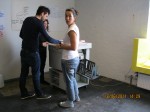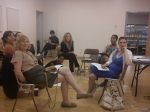Filed under: Beirut, bla bla on writing and language, Kunst / Art, Lyd / Sound, notes on cph, texts
The past months have been quiet on the blog – my PhD research has taken most of my attention together with a series of projects and events of which I’ll show a bit here.
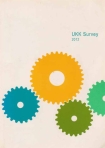 From 2010 to 2012 I was engaged in UKK, Young Art Workers Association in Denmark. While co-directing the association, the directory also celebrated UKK’s 10 anniversary with an exhibition event at Overgaden – Institute of Contemporary Art in Copenhagen. With one of the working groups I made a survey about the working conditions among our members. It resulted in a publication and an international seminar launched and held during the anniversary. Basically, most of our members try to make a living outside of the gallery system and it takes about a decade after graduation to establish a steady income. The ten years UKK has existed have witnessed a lot of changes that have influenced the working conditions of artists, for instance: less (and less flexible) public benefit, professionalisation of the institutions of the art scene (but still no or little payment to artists and independent curators when they work with these institutions) and cuts in creative/artistic educations in general. These changes are important for young art workers, who cannot survive from teaching or benefit and who try to establish an exhibition record in a system that does not pay them for it. Read our comment in the UKK Survey 2012. Back in 2010, UKK also wrote a
From 2010 to 2012 I was engaged in UKK, Young Art Workers Association in Denmark. While co-directing the association, the directory also celebrated UKK’s 10 anniversary with an exhibition event at Overgaden – Institute of Contemporary Art in Copenhagen. With one of the working groups I made a survey about the working conditions among our members. It resulted in a publication and an international seminar launched and held during the anniversary. Basically, most of our members try to make a living outside of the gallery system and it takes about a decade after graduation to establish a steady income. The ten years UKK has existed have witnessed a lot of changes that have influenced the working conditions of artists, for instance: less (and less flexible) public benefit, professionalisation of the institutions of the art scene (but still no or little payment to artists and independent curators when they work with these institutions) and cuts in creative/artistic educations in general. These changes are important for young art workers, who cannot survive from teaching or benefit and who try to establish an exhibition record in a system that does not pay them for it. Read our comment in the UKK Survey 2012. Back in 2010, UKK also wrote a 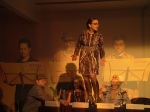 speech about education for Camel Collectives Second World Congress of Free Artists, which took place at Århus Kunsthal. Very soon, in a week!, they’ll be launching the speeches in a great publication at Independent Curators International in New York. Speaking about publications and education, in August this y
speech about education for Camel Collectives Second World Congress of Free Artists, which took place at Århus Kunsthal. Very soon, in a week!, they’ll be launching the speeches in a great publication at Independent Curators International in New York. Speaking about publications and education, in August this y ear Tina Helen organised a dinner event that were to take place in 1977 in which speeches had to address the future of education. This time, I participated myself with a speech and it will also be published next week on the 24th of October at Bureau Publik. The dinner event was quite an intimate, yet focused experience; a bunch of professionals both drinking and performing, in-between a family dinner that us Danes are so good at performing and a public conference. Am excited to see the result of both publications. Another publication that also had alternative knowledge production as its topic was the Officin production A feast is… edited by Ida Marie Hede, Ursula Nistrup and Trine Friis Sørensen. The book shows that it is the result of much care; all pages are printed
ear Tina Helen organised a dinner event that were to take place in 1977 in which speeches had to address the future of education. This time, I participated myself with a speech and it will also be published next week on the 24th of October at Bureau Publik. The dinner event was quite an intimate, yet focused experience; a bunch of professionals both drinking and performing, in-between a family dinner that us Danes are so good at performing and a public conference. Am excited to see the result of both publications. Another publication that also had alternative knowledge production as its topic was the Officin production A feast is… edited by Ida Marie Hede, Ursula Nistrup and Trine Friis Sørensen. The book shows that it is the result of much care; all pages are printed 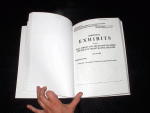 manually on a Risograph. Authors could more or less decide what to contribute with and my text, Suitcase, is about the use of art historical references in a contemporary and global art scene. But the contributions are diverse, from fiction to dinner parties and research projects to photographs. A last text about knowledge production that I’ll mention here is a contribution to the Chilean magazine Observatorio Cultural. The magazine is published by the arts council in Chile, which is now under the direction of a right wing government, so I chose to write about the economic side of knowledge production and how knowledge production in the arts differ from the economic version by being non-utilitarian and rather visual thoughts not aimed for increasing productivity and efficiency. I showed this via analyses of artist Rabih Mroue’s Pixelated Revolution (2012) and Hito Steyerl’s The Kiss (2012). This link is to a pdf of the magazine – in Spanish.
manually on a Risograph. Authors could more or less decide what to contribute with and my text, Suitcase, is about the use of art historical references in a contemporary and global art scene. But the contributions are diverse, from fiction to dinner parties and research projects to photographs. A last text about knowledge production that I’ll mention here is a contribution to the Chilean magazine Observatorio Cultural. The magazine is published by the arts council in Chile, which is now under the direction of a right wing government, so I chose to write about the economic side of knowledge production and how knowledge production in the arts differ from the economic version by being non-utilitarian and rather visual thoughts not aimed for increasing productivity and efficiency. I showed this via analyses of artist Rabih Mroue’s Pixelated Revolution (2012) and Hito Steyerl’s The Kiss (2012). This link is to a pdf of the magazine – in Spanish.
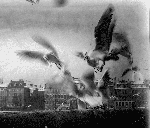 The past months have also allowed for collaborations with artists here in Copenhagen. ‘Collaboration’ is probably not the right word, but I really enjoy to discuss artist’s projects and to engage in their thought process and practice, so it feels like an equal and very productive exchange. With Honey Biba Beckerlee I engaged in the text part of her exhibition Entangled Realities II at Koh-i-noor, which was a conceptually tight and visually clear exhibition (see kunstkritikk.dk’s review) about quantum physics and photography. With Stefan A. Pedersen I engaged in an interview about the exhibition Out of, In, On, and Off at Overgaden – Institute of Contemporary Art. His
The past months have also allowed for collaborations with artists here in Copenhagen. ‘Collaboration’ is probably not the right word, but I really enjoy to discuss artist’s projects and to engage in their thought process and practice, so it feels like an equal and very productive exchange. With Honey Biba Beckerlee I engaged in the text part of her exhibition Entangled Realities II at Koh-i-noor, which was a conceptually tight and visually clear exhibition (see kunstkritikk.dk’s review) about quantum physics and photography. With Stefan A. Pedersen I engaged in an interview about the exhibition Out of, In, On, and Off at Overgaden – Institute of Contemporary Art. His  exhibition was made out of, in, on, and off China and an unfinished film his dad made in 1972 on a trip to China. Stefan followed his dad’s trip and re-created the film, but he made it out of new footage and a diary collage soundtrack. Blue curtains (that also appeared in the original film) divided the sound and the visuals reminding us of what one can/cannot see and hear. With Camilla Bachiry and Maria Diekman I engaged in discussions about their experimental audio guide to Rudolph Tegners Museum and Sculpture Park north of Copenhagen. Through historical and site-specific research they creat
exhibition was made out of, in, on, and off China and an unfinished film his dad made in 1972 on a trip to China. Stefan followed his dad’s trip and re-created the film, but he made it out of new footage and a diary collage soundtrack. Blue curtains (that also appeared in the original film) divided the sound and the visuals reminding us of what one can/cannot see and hear. With Camilla Bachiry and Maria Diekman I engaged in discussions about their experimental audio guide to Rudolph Tegners Museum and Sculpture Park north of Copenhagen. Through historical and site-specific research they creat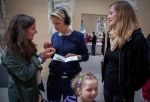 ed artistic responses to the museum collection, the architecture, the sculpture park and life of Tegner. They also used music from Valby Lokalkor and other experimental musicians in Copenhagen. The way they aurally and conceptually decentralised the pompous figure of Tegner worked well, while still paying tribute to his somehow odd and off artistic production.
ed artistic responses to the museum collection, the architecture, the sculpture park and life of Tegner. They also used music from Valby Lokalkor and other experimental musicians in Copenhagen. The way they aurally and conceptually decentralised the pompous figure of Tegner worked well, while still paying tribute to his somehow odd and off artistic production.
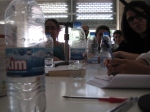 Another collaboration I engaged in was with 98weeks research project in Beirut, Lebanon. One of the directors, Marwa Arsanios, invited me to collaborate on a radio project about feminism. Our project called “On the politics of silence and speaking” was part of Our Lines are Now Open: A Radio Series on the Poetics and Politics of Language, which 98weeks organised in collaboration with Lawrence Abu Hamdan and Nora Razian. For our radio programme, Marwa and I invited t
Another collaboration I engaged in was with 98weeks research project in Beirut, Lebanon. One of the directors, Marwa Arsanios, invited me to collaborate on a radio project about feminism. Our project called “On the politics of silence and speaking” was part of Our Lines are Now Open: A Radio Series on the Poetics and Politics of Language, which 98weeks organised in collaboration with Lawrence Abu Hamdan and Nora Razian. For our radio programme, Marwa and I invited t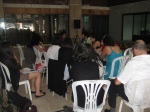 he philosopher Nikita Dhawan, who directs the Frankfurt Research Centre for Postcolonial Studies and who has written extensively on transnational feminism. Her book Impossible Speech: On the Politics of Silence and Violence inspired us to invite her to do a workshop on feminism and speech. For five hours we went through Gayatri Spivak’s “Can the Subaltern Speak” with a mixed group of art students, young feminists, journalists, writers etc. It was very exciting as feminism is a subject of renewed interest and influence in Lebanon these years. Later the same day, I moderated a conversation with Nikita about the main topics of her research on speech, silence, feminism and postcolonialism. This event was held within the framework
he philosopher Nikita Dhawan, who directs the Frankfurt Research Centre for Postcolonial Studies and who has written extensively on transnational feminism. Her book Impossible Speech: On the Politics of Silence and Violence inspired us to invite her to do a workshop on feminism and speech. For five hours we went through Gayatri Spivak’s “Can the Subaltern Speak” with a mixed group of art students, young feminists, journalists, writers etc. It was very exciting as feminism is a subject of renewed interest and influence in Lebanon these years. Later the same day, I moderated a conversation with Nikita about the main topics of her research on speech, silence, feminism and postcolonialism. This event was held within the framework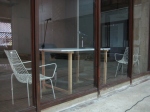 of Home Works 6 organised by Ashkal Alwan, the organisation that commissioned Our Lines… The conversation together with the rest of the programmes in the radio series were streamed online and broadcasted as part of the show “Ruptures” by journalist Ziad Nawfal on radio Lebanon 96.2 FM. Podcasts are available on Ibraaz, an online platform of contemporary visual culture in North Africa and the Middle East. Marwa and I will continue the collaboration on feminism in about a year together with 98weeks other director, Mirene Arsanios. The Danish Institute in Damascus has provided us with funding to carry out a research about women’s role in contemporary art and literature in the Middle East.
of Home Works 6 organised by Ashkal Alwan, the organisation that commissioned Our Lines… The conversation together with the rest of the programmes in the radio series were streamed online and broadcasted as part of the show “Ruptures” by journalist Ziad Nawfal on radio Lebanon 96.2 FM. Podcasts are available on Ibraaz, an online platform of contemporary visual culture in North Africa and the Middle East. Marwa and I will continue the collaboration on feminism in about a year together with 98weeks other director, Mirene Arsanios. The Danish Institute in Damascus has provided us with funding to carry out a research about women’s role in contemporary art and literature in the Middle East.
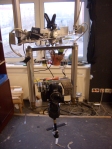 Finally, I’ll mention two projects where we discussed artistic production in an academic context. A fellow PhD student and I invited sociologist at Wissenschaftszentrum Berlin für Sozialforschung Ignacio Farías to our department for arts and cultural studies at University of Copenhagen (IKK) to present his research on artist studios. He has an ethnographic approach and based on his fieldwork he explained how the material an artist is working with partakes in shaping the art work. Despite the talk being held during autumn vacations (precisely a year ago today!), we had lots of guests (especially a lot of art academy students, which was a great surprise) and an engaged discussion. There is a video podcast of the event here: The Artist Studio as a Cyborg Machine.
Finally, I’ll mention two projects where we discussed artistic production in an academic context. A fellow PhD student and I invited sociologist at Wissenschaftszentrum Berlin für Sozialforschung Ignacio Farías to our department for arts and cultural studies at University of Copenhagen (IKK) to present his research on artist studios. He has an ethnographic approach and based on his fieldwork he explained how the material an artist is working with partakes in shaping the art work. Despite the talk being held during autumn vacations (precisely a year ago today!), we had lots of guests (especially a lot of art academy students, which was a great surprise) and an engaged discussion. There is a video podcast of the event here: The Artist Studio as a Cyborg Machine.
About a week later, also a year ago, the cultural theorist and critic Mieke Bal came to our department to engage in a panel about “Visual Artefacts and Migrating Concepts”. We were five academics from IKK who had ten minutes each to ask Bal a question about her work informed by our own research. I chose to ask about the political context of artworks. Inspired by her book, Of What One Cannot Speak, on the artist Doris Salcedo, who works specifically with a political Colombian context, the questions were: How much contextual knowledge is it necessary to obtain to write about an artwork? Can an ethnographic approach help? Or should one stay with the books and the artworks? Bal was clearly tending toward the latter and did not approve of an ethnographic approach. At the time, I was working on the methodology for my PhD and read a lot of ethnography. It seemed quite helpful and I wrote an article about it for the South African journal Critical Arts: South-North Cultural and Media Studies. The article will be published in December and it also looks into one of my case studies, Home Works 1-6 (of which the collaboration with 98weeks mentioned before took part). Now I’m already doubting what I wrote, but Bal will be back for a PdH master class already next week, so maybe there’s a possibility to get clearer on the issue.
Filed under: Beirut, bla bla on writing and language, konversationpieces, Kunst / Art, Lyd / Sound, notes on cph, texts, The Love Libration Movement
Texts, reading and writing came out to be the topic of October and November last year. First, in the workshop Verb Lists – Knowledge Done Again at the conference Mobilityshifts : International Future of Learning Summit at New School in New York and later, in a talk about Roles and Relations in Artistic Research at the ISCP International Studio & Curatorial Program, a talk which nevertheless morphed into a collective reading-writing session.
The workshop Verb Lists – Knowledge Done Again was developed from a symposium held in Copenhagen in June 2011 with the University of Copenhagen, Freïe Universität and Goldsmiths University of London, which I co-organized with Adam Drewes, Katrine Dirckinck-Holmfeld, Martin Glaz Serup and Trine Friis Sørensen. The symposium was called How to do things with academia and questioned traditional ways of organizing and performing academia. All participants submitted, instead of an abstract, a manual of how to do something differently with and in academia. Divided into 5 groups some 30 people worked intensively over a period of 3 days to create 5 collective manuals, which were printed and performed the last day.
In my group (consisting of Thorbjørn Becjman, Jürgen Bohm, Paola Crespi, Janis Jefferies, Trine Friis Sørensen and myself) we had DIY universities as our topic and somehow ended up creating a circular manual of “doing” as such inspired by Richard Serra’s Verb List from 1967-68. We literally read the verbs out loud, performed them, video recorded it and then asked others to interpret our movements thereby generating a new list of verbs. The new list of verbs was then performed, recorded, interpreted etc. creating a never ending manual translating verbs into action, actions into verbs and text into image, image into text.


The transformation of verbs to physical movements inspired Trine Friis Sørensen and I to translate the manual into the driving force of a workshop for the Mobilityshifts conference in October 2011 at the New School in New York. With a critical intention to question the discourse of the “educational turn”, which has influenced the European art scene the last decades, we decided to look at core texts from the discourse in terms of what verbs they use and thus what actions they ask us readers to perform. We were interested in asking if the sometimes abstract and idealistic theory, which we both are inspired of in our work, could be grounded and materialized in simply performing the verbs of the texts.
We chose to work with Jacques Ranciere’s The Ignorant Schoolmaster: Five lessons in Intellectual Emancipation, Irit Rogoff’s article “Turning”, Anton Vidokle’s “Exhibition as School: unitednationsplaza” and the text material from the Mobilityshifts conference itself. From these texts we chose central paragraphs and extracted the verbs into two verb lists. During the two hours we were scheduled to do the workshop we divided the participants into two groups, asked them to perform the verbs of one of the verb lists, recorded them doing it and swapped the videos for the other group to interpret their movements.
The reactions were many, some understood the concept without further questions and jumped easily into the exercise, others questioned everything. Roughly, some expected to learn a useful teaching method, others were happy staying with an open situation in which an experiment was being carried out and in which the means were more important than ends. Finally, we never really discussed the actual discourse of the “educational turn” (it was not clear how present this discourse was among the participants, we assumed that they were well informed as the conference material referred to initiatives considered part of it), but somehow we ended up performing it instead. To stay with the process and the means are key features of that discourse and this was what actually happened. One, who focused on the ends straight from the beginning and kept discussing what we were doing, was told by one of the others to “stop wanting to know everything beforehand”.
What we learnt from the workshop were two things. One, that on the one hand it takes something to make people go through a two hour session that is not focusing on results, but on the other hand that this situation carries a lot of potential. And two, that having had one more hour and having made the participants find the verbs themselves would have made the texts more present and the discussion of them potentially more open for realizations about the discourse.
One of the participants in the verb lists workshop was Mirene Arsanios, a friend and colleague who also participated in How to do things with academia and with whom I have been developing public reading and writing exercises during the past year. Being co-founder of 98weeks Project Space in Beirut she was invited by the ISCP to present 98weeks there during a one month residency. Mirene had asked me to do a talk with her and what we proposed was something about roles and relations in artistic research in relation to 98weeks. However, and more excited about trying out new ideas rather than cementing old ones, we decided to do an open and collective reading session to explore the mechanisms of reading desires and writing. Some 30 people gathered with the book they were reading at the moment and after a short introduction we sat reading in silence. Whenever one felt the urge to share some lines, one would go to the microphone and read out loud a paragraph. This was recorded and rules were simple. All the time one person had to be live archiving the event taking notes on a computer and one could swap books with another person, but then one had to go to two computers to take notes in a shared google document.
Unfortunately, we had to stop after an hour, because just at that moment the group found a rhythm, got hooked on writing and dived deep into the reading/writing experience. Afterward, while sharing the leftovers of the wine, we dreamt of doing this for hours on and on. With people coming and going, falling asleep, eating, smoking, drinking and sharing their often lonesome reading experience. There might be a chance we can do so in Copenhagen in March, if so, you are all invited.
India Song (1975) by Marguerite Duras – 1 minute and 3 seconds are now available on YouTube
the music, the painful cry of one of marie stretter’s abandoned lovers, the incense, the sense of death, the slowness and the spatial use of the mirror. isn’t it great
(a former comment on India Song)
I am sitting in a room
a room different from your room
getting high on ghosts and haunting appearances.
Soon i’ll be out of the room
i’ll be a graduate in a new room
a room different from your room and this room.
All i know is that the new room
will be a resting room,
a Beirut room and a research room.
I will be leaving the room
when i have created the space
for rest and research to follow me around
(I am indebted to Alvin Lucier and his work I Am Sitting in a Room for inspiration to this text-poem)
(Følgende tekst er skrevet som påskud for at have en computer fremme et sted, hvor det ellers er ulovligt. Først efter at have skrevet teksten, besluttede jeg at uploade den her på bloggen)
1
Jeg sidder i et arkiv, et Prokofiev arkiv på et bibliotek i London, og kopierer en CD ganske ulovligt på min computer. Må ikke have den tændt, så jeg bliver nødt til at gøre som om, at jeg skriver noter om musikken. Seriøst og på dansk. Det er vel en god nok undskyldning for at have computeren fremme?
2
Derfor inddeler jeg også teksten i numre, som om jeg skriver om hvert musikstykke. Det er Vladimir Horowitz, der spiller Debussy, Prokofiev, Kabalevsky og Moszowski. Jeg har valgt den CD, fordi en ven har sendt mig et stykke musik af Scarlatti indspillet af Horowitz. Det er meget smukt, så jeg ville gerne høre ham spille værker af andre komponister.
3
Klavermusik minder mig om barndommen. Om mine fingres tur over tastaturet. Om min afslappede, men koncentrerede fokuseren på musik og lyden. Pedalerne, noderne, næste takt, den samlede lyd fra strengene og en stille knagen fra to bestemte tangenter.
4
Det eneste jeg hører nu, er lyden af computeren, der aflæser CD’en. Jeg sidder i et aflukke, et lydtæt aflytningsrum. Der er et vindue i døren og jeg håber, at ingen af de meget venlige bibliotekarer kommer forbi. Ville ikke kunne lyve over for dem. Derfor har jeg også taget høretelefoner på, så det ligner, at jeg lytter til CD’en. En trøje er lagt henkastet over CD-afspilleren, så man ikke kan se, at displayet viser –NO DISC—
5
Mangler nu kun at importere en fjerdedel af CD’en. Jeg tror det lykkes. Så kan jeg gå en etage ned til mit skrivebord og fortsætte min læsning. Forskellen er, at jeg kan have Horowitz i ørene.
6
Så tænker jeg på Agnes, min spillelærerinde, som boede med sin mand Rune og to børn i en lille by udenfor Kerteminde, hvor jeg gik til klaver. Hun var opvokset i Ungarn og havde spillet 8 timers klaver hver dag i mange, mange år. Hun var dygtig, rigtig dygtig og jeg elskede, når hun spillede nye stykker for mig, som jeg skulle lære. Der var sådan en forventningens glæde over momentet, hvad havde hun valgt til mig? Kunne jeg virkelig lære at spille det? Debussy var en af dem, han drev familien til vanvid.
7
Men det meste af tiden var jeg på bænken. Et langstrakt moment af fingersætningsfumlen, hakkende triller – en bibliotekar går forbi, ups. Hvor kom jeg fra? – og en stammende sammensætning af de to hænders kunnen. Og en skjult irritation og åbenlys beundring over min venindes Sarahs evne til at lære stykkerne på rekordtid og samtidig spille dem i rekordfart.
8
CD’en er importeret. Jeg slukker for kontakten, SONY er ikke længere tændt eller på standby. CD’en er i kassetten. Faren er ovre, ned for at lytte.
Tjek den her youtube-video. Det er en kort intro til Palæstinas ansøgning om at komme med i Eurovision. Blandt andre Superflex’eren Rasmus Nielsen udtaler sig.
Læs her, hvad jeg tidligere har skrevet om sagen.
Nej, to af DR’s absolut bedste programmer, Dokumentarzonen og Ultralyd, skal ikke rammes af DR’s nedskæringer! Det er to af de få programmer tilbage, hvor der stadig er tid og rum til at leje med radiomediets mange muligheder og de har gennem årene skabt fantastiske radiooplevelser, der har fået priser verden over. Ja, de to programmer var faktisk en af grundene til, at jeg startede på universitetsradioen og fortsatte videre i systemet – og jeg er ikke den eneste. Det er kræs for øret og fortæller om Danmark på en tænksom og udfordrende måde. Det behøver vi!
Lyt til Ultralyd og Dokumentarzonen
Underskriftsindsamling mod lukningen af Dokumentarzonen og Ultralyd
Indlæg i debatten:
P1-redaktørens blog
Kronik af Torben Brandt d. 27. april (desværre ikke online)
Mediebrokker-blog
Artikel i Kristeligt Dagblad (desværre ikke online, menkan findes i et af indlæggene P1-redaktørens blog)
Okay, igennem de sidste 4 måneder har vi være 12 mennesker i en gruppe, der har arbejdet henimod dagen i dag. Vi skulle lave en præsentation (som en obligatorisk del af vores master i samtidskunst på Goldsmiths) som resultat af et “møde” med et rejse-lyd-arkiv og titlen på gruppen var Travel-sampling-surprise, sounding the unthinkable. Ja, en rimelig sindsyg titel, som betyder en hel masse og ingenting på samme tid.
Vi begyndte med at skabe vores eget arkiv fra rejser og interviews. Snart fandt vi ud af, at guidning skulle være vores tema.
Præsentationen vendte vi til at være et eksperiment, vi brugte den videnskabelige terminologi (metode-overvejelser og adoptering/forandring/sammensætning af eksisterende strukturer) og konstruerede tre loops, hvori den samme process blev gentaget med forskellige ændringer (link til Derrida). Vi havde valgt at sætte stolene som i et fly (link til Michael Snow og hans film Rameau’s Nephew) for at skabe stemningen af rejse og for at putte folk ind i en anden sidde-struktur end den almindelige præsentationsform, hvor tilhørerne sidder samlet i en stor masse.
Det første loop startede med en video af en af gruppens mødre, der foran en hvid væg og i kontortøj lavede flyinstruktioner. Hun er tidligere stewardesse og kunne stadig huske bevægelserne. Dernæst blev der distribueret piller og vand. Dernæst et uddrag af en tekst om migration og kunst samtidig med, at en voiceover gav instruktion om, hvordan teksten skulle læses. Lidt senere fik de en ny tekst og endnu en instruktion. Simultant blev instruktionerne skrevet ned i et worddokument og projiceret op på væggen.
Næste loop startede med stewardessen igen, men denne gang med en computer voiceover, der bad folk om at læse grundigt, lytte intenst og kigge godt efter. Endnu gang blev pillerne delt ud og dernæst en ny tekst med følgende voiceover-instruktion. I det her loop var frekvensen af tekster højere og tempoet ligeså.
Sidste loop startede med musik og et stykke kage lavet fra en græsk ritual-opskrift om, hvordan man kan genfinde forsvundne objekter. Opskriften var blevet delt ud i det foregående loop. Dernæst blev de bombarderet med tekster (link til ideen om det hyperaktive samfund og det overvældende informationsflow) og instruktionerne blev mere aktive, de blev bedt om at klappe hver gang de læste et bestemt ord, at stampe i jorden, at læse teksten op osv. Og de responderede. Der var en sand kakafoni af klap og stemmer (link til fonologi i modsætning traditionel logik og søgen efter mening), der steg i takt med musikken. Da der ikke var flere tekster tilbage stoppede loopet med benhård elektrisk guitar fra en sang, der har omkvæddet “You can do a lap dance here for free”. Vi havde klippet stewardessen sammen og speeded hende op, så armene fløj ind og ud. Samtidig blev de bedt om at danse og gud hjælpe mig om ikke de gjorde det. Den ene professor lavede tango-moves og den anden rejste sig op på stolen og mimede en lap dance! Det skal siges, at lap dance-sangen blev valgt fordi, “faget” hedder lab – en forkortelse af laboratory. Faget er tænkt som fristed, hvor teori kan omformes og itale/scenesættes, men for mange studerende udviklede det sig til et pres, især fordi få er vant til at arbejde som en gruppe. Derfor var det for os befriende (og en kæmpe risiko) at tage lidt pis på det hele.
Men ja, det var en ret fantastisk oplevelse. Som det altid er med sådan nogle situationer, så kan man ikke planlægge andres reaktioner, men at det endte med dans og begejstring er rimelig vildt. Og folk var positive, fordi vi havde taget et emne seriøst og udforsket det fra forskellige vinkler, fordi teori kom til live i selve tilblivelsen af eksperimentet og fordi den turbulente situation var produktiv – skabte et lydlandskab af stemmer, klap og trampen og en kropslig udfoldelse. Både koreografering og orkestrering var i spil.
Er jeg selvhøjtidelig? Måske, men jeg tillader mig at nyde og dele en oplevelse, hvor noget jeg har arbejdet på længe, investeret en del energi i og som samtidig er et nyt terræn for mig, hvor det noget gik hen og skabte resonans for andre end mig og min gruppe.
Filed under: Lyd / Sound
Hvad er det for noget med lyd? Hvorfor er det så vigtigt, at man skal bruge et helt år på at læse en master i lyd?
De to spørgsmål er røget igennem mit hovede et par gange i løbet af de sidste måneder. Her på en halvgrå mandag i færd med at læse den franske filosof Michel Serre faldt tingene lidt bedre på plads.
Lyd er virvar, tumult, kaos. Lyd angriber os fra alle sider, vi registrerer lyd fra objekter vi end ikke kan se. Vi hører meget mere end vi opfatter. Lydbølgerne sender information fra tingene der omgiver os ind i vores krop. Lydbølgerne fylder tomrummet mellem mennesket og omgivelserne, lyden er i luften, i tingene, i ordene.
Støj bliver ofte sammenlignet med vand. Ordet noise stammer fra fransk og er lingvistisk relateret til vand. Et oprørt hav, en masse, der bølger, sprøjter og skiller sig ad, for atter at samles igen. Aldrig i den samme form, altid i oprør. Lyden af havet, larmen fra bølgebrus. Og der, midt i Michel Serres tekst, var jeg tilbage på havet, de utallige timer som barn tilbragt i en lille optimistjolle, alene, kun i selskab med vandet og støjen, i rytme til bølgernes skvulp mod båden og vindens susen i sejlet.
I modsætning til synet åbner høresansen op for en langt bredere skala af indtryk. Hvad du ser er fra ét bestemt perspektiv. Hvad du hører møder dig fra 360 grader, horisontalt og vertikalt. At forstå verden gennem lyd giver mulighed for diversitet, multiplicitet, mangeartethed. Det giver mulighed for støj, tidens flow, vandets evindelige bevægen og kaos – ganske enkelt; et ikke så snævert syn på verden.
